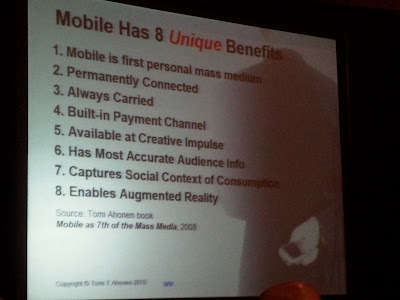Short description of the software
How can Moviestorm be used in a digital learning environment?
Coming to grips with Moviestorm
In Moviestorm you can choose to start from scratch, or to build your first movie using existing sets, characters, furniture or other props. I choose to start from scratch, building my first movie from an empty set (I learn best when a challenge is in my face, the learning curve is steeper, but the results are – most of the time - stronger).Different steps to take while building a movie with Moviestorm
Setting the scene:
In order to have the feel of an AR setting, I wanted to use a real life picture. So I climbed to the highest point of the institute’s building, and took a panoramic view of the institute (= the background). In addition to the background I added some features (microphones) that would fit the setting I had in mind for the movie.
Additionally, I changed the lights on the scene and I added some walls on the side, allowing me to let the characters enter the ‘roof’. This was not really necessary for the AR later on, but it gave me the possibility of using a door movement, this was a good extra exercise for possible future scenarios.
Building characters
If I would want to use characters in my AR that resembled different persons, I needed to customize the given characters in the Moviestorm movie as well. So I choose to go with four different characters, but building them with the garments (casual, formal…), facial types (strong eyebrows, cheekbones..) and hairstyles (beards, moustache, glasses or not…) from the free library of Moviestorm. For more professional garments (doctor, nurse…) I would have to buy an additional set from Moviestorm.
Adding motion
Once I had my setting and my characters, it was time to put them onto the scene and make them move. This is where the Moviestorm tutorials really came in handy. Moviestorm offers a wide variety of movements, and where the building of characters and the selection of the setting is a bit straight forward, getting all the movements in was a bit of a challenge. It was not enough to pick-up a character and place it somewhere else. For if I would want to make the animated movie look more like real life, I had to put in extra gestures to bring the characters to life (well, I must admit that was one of the guidelines suggested by the tutorial on movement, it did make sense as at first my characters were rather static).
The characters inside Moviestorm can also pronounce words or sentences, meaning their lips will move when you type in the text they are supposed to say. This lip syncing is also considered as a motion. The actual audio that accompanies the text those characters sync must be added later on, or can be embedded using an existing audio file.
Adding sound
To distinguish between the different characters, I opted to use different tones of my voice to give the characters distinct voices. This is where the off key voice comes in as well (yes, I am a lousy singer). Inside Moviestorm you can record ‘live’, and as such link the live recording to the text spoken by the characters. But you can also add your own edited audio to the text by importing a sound you made beforehand.
To get my audio edited I used the free audio editing software Audacity. To make the intro of the movie more ‘rooftop’ like, I added an ambient sound that was available in Moviestorm: the suburbia 02 sound (driving cars, etc).
Editing the movie
After putting all the characters through the motions, the movie could be edited. Again the Moviestorm tutorials come in handy. The tutorial offered for editing only touched the basic possibilities, and for me that was not enough to grasp it. I edited the scenes in the wrong way, pasted content which was not relevant to scenes… made a mess at first. But by going through some of the peer tutorials, it became clearer what I had to do, and how I could build and cut the complete movie.
In the editing process you could also switch between camera’s.
Keeping on top of the movie
As the movie is build, the user of the software can always go and take a look at the product as it was or is at that point in time. This part was easy and straight forward, as it feels like using youtube movies: play and stop button, fast forward options, time line…
Publishing
The final and definitely most straight forward function in Moviestorm is publishing the movie. You can publish a movie by simply selecting the format size and clicking the ‘publish’ button. Really easy.
Well, I still need to work on my audio files, apparently the high pitch sounds in the audacity files resulted in pitched sounds in the final movie (not while I was listening to the preview of the movie, so I need to see what really happens in the audio rendering).
Overall, I was really happy that it worked, one step closer to AR, Yeah!















